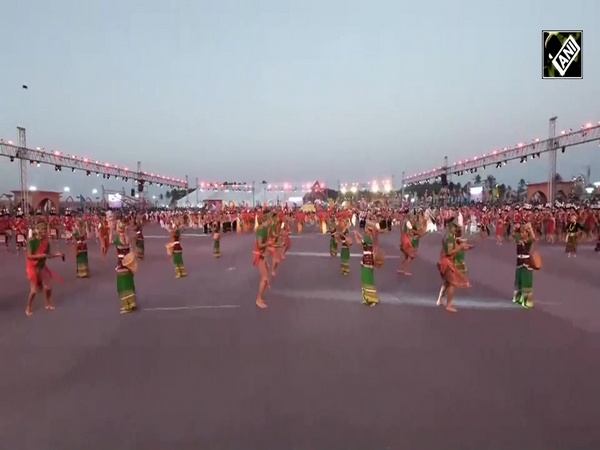India Ratings cuts GDP growth forecast to 7 per cent for 2022-23
Mar 30, 2022

New Delhi [India], March 30 : India Ratings and Research (Ind-Ra) on Wednesday cut India's GDP growth forecast for the 2022-23 financial year to 7 - 7.2 per cent from its earlier estimate of 7.6 per cent announced in January.
The rating agency said the 7.6 per cent growth projection announced in January 2022, is unlikely to hold due to the global geo-political situation arising out of the Russia-Ukraine conflict.
In the new report, Ind-Ra has created two scenarios with respect to the FY23 economic outlook basis certain assumptions.
In Scenario 1, the crude oil price is assumed to be elevated for three months, and in Scenario 2, the assumption is for six months, both with a half cost pass-through into the domestic economy.
Ind-Ra expects GDP to grow 7.2 per cent YoY in Scenario 1 and 7.0 per cent yoy in Scenario 2 in FY23, compared to its earlier forecast of 7.6 per cent.
However, the size of the Indian economy in FY23 will still be 10.6 per cent and 10.8 per cent lower than the FY23 GDP trend value in Scenario 1 and Scenario 2, respectively.
Consumption demand as measured by private final consumption expenditure (PFCE) has been subdued in FY22, despite sales of select consumer durables showing some signs of revival during the festive season, Ind-Ra noted in the report.
Although the January 2022 round of Reserve Bank of India's (RBI) Consumer Confidence Survey shows that Current Situation Index increased marginally on the back of better sentiments with respect to the general economic situation, it continues to be in the pessimistic zone, it said.
The Expectations Index, which captures one year ahead outlook, moderated due to the surge in COVID-19 infection cases in January 2022. Household sentiments on non-essential/ discretionary spending continue to be subdued.
As the consumer sentiment is likely to witness a further dent due to the Russia-Ukraine conflict leading to rising commodity prices/consumer inflation, Ind-Ra expects PFCE to grow at 8.1 per cent and 8.0 per cent in Scenario 1 and 2, respectively, in FY23, as against its earlier projection of 9.4 per cent.
After PFCE, investment demand as measured by the gross fixed capital formation (GFCF) is the second-largest component (27.1 per cent) of GDP from the demand side. Private Capex by large corporates, which has been down and out over the past several years, had shown some promise lately in view of the roll-out of the Production-linked Incentive Scheme and increased manufacturing sector capacity utilisation driven by higher exports.
However, Ind-Ra expects the surge in commodity prices and disruptions in the global supply chain caused by the Russia-Ukraine conflict to take a toll on their sentiments and there is a likelihood that this capex may get deferred till more clarity emerges with respect to the conflict.
The government Capex, however, is unlikely to be dented. By scaling up the Capex to GDP ratio for FY22 to 2.6 per cent as per the revised estimate from the budgeted 2.5 and budgeting the Capex at 2.9 per cent of GDP for FY23, the government has been showing its resolve to do the heavy lifting.
Ind-Ra, therefore, believes that the overall GFCF growth will not be impacted much and it will grow at 8.8 per cent both in Scenario 1 and 2 in FY23, 10bp higher than January 2022 forecast, the rating agency said in a statement.
A 10 per cent YoY increase in petroleum product prices without factoring in currency depreciation is expected to push up Consumer Price Index inflation by 42 basis points and Wholesale Price Index inflation by 104 basis points.
Similarly, a 10 per cent YoY increase in sunflower oil without factoring in currency depreciation is expected to push Consumer Price Index inflation by 12.6 bp and Wholesale Price Index inflation by 2.48 bp. Both these events could increase the retail and wholesale inflation by 55 bp and 109 bp, respectively.
Retail prices of petrol and diesel were on hold since early-November 2021. However, they have begun to inch up from March 2022 almost on a daily basis. Therefore, Ind-Ra estimates retail inflation to average 5.8 per cent and 6.2 per cent in FY23 in Scenario 1 and 2, respectively, as against the agency's earlier forecast of 4.8 per cent.
Ind-Ra expects the current account deficit to come in at 2.8 per cent of GDP under Scenario 1 and at 3.2 per cent of GDP under Scenario 2 as against its earlier projection of 2.3 per cent of GDP.




















